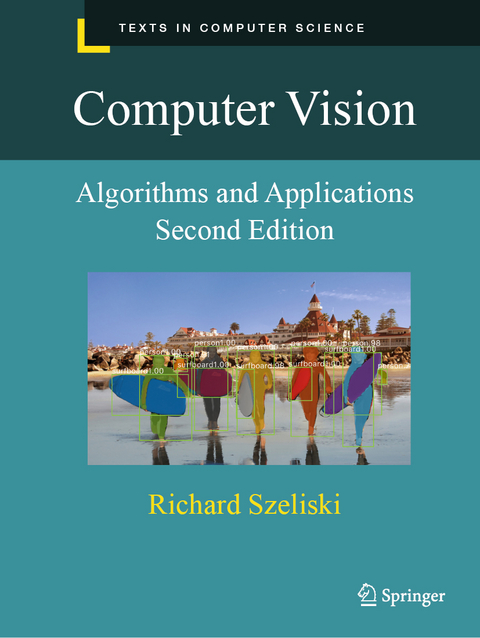
Computer Vision
Springer International Publishing (Verlag)
978-3-030-34374-3 (ISBN)
Computer Vision: Algorithms and Applications explores the variety of techniques used to analyze and interpret images. It also describes challenging real-world applications where vision is being successfully used, both in specialized applications such as image search and autonomous navigation, as well as for fun, consumer-level tasks that students can apply to their own personal photos and videos.
More than just a source of "recipes," this exceptionally authoritative and comprehensive textbook/reference takes a scientific approach to the formulation of computer vision problems. These problems are then analyzed using the latest classical and deep learning models and solved using rigorous engineering principles.
Topics and features:
- Structured to support active curricula and project-oriented courses, with tips in the Introduction for using the book in a variety of customized courses
- Incorporates totally new material on deep learning and applications such as mobile computational photography, autonomous navigation, and augmented reality
- Presents exercises at the end of each chapter with a heavy emphasis on testing algorithms and containing numerous suggestions for small mid-term projects
- Includes 1,500 new citations and 200 new figures that cover the tremendous developments from the last decade
- Provides additional material and more detailed mathematical topics in the Appendices, which cover linear algebra, numerical techniques, estimation theory, datasets, and software
Suitable for an upper-level undergraduate or graduate-level course in computer science or engineering, this textbook focuses on basic techniques that work under real-world conditions and encourages students to push their creative boundaries. Its design and exposition also make it eminently suitable as a unique reference to the fundamental techniques and current research literature in computer vision.
lt;p> Dr. Richard Szeliski has more than 40 years' experience in computer vision research, most recently at Facebook and Microsoft Research, where he led the Computational Photography and Interactive Visual Media groups. He is currently an Affiliate Professor at the University of Washington where he co-developed (with Steve Seitz) the widely adopted computer vision curriculum on which this book is based. He was awarded the IEEE Computer Society PAMI Distinguished Researcher Award in 2017 and is an IEEE and ACM Fellow.
1 Introduction.- 2 Image Formation.- 3 Image Processing.- 4 Model Fitting and Optimization.- 5 Deep Learning.- 6 Recognition.- 7 Feature Detection and Matching.- 8 Image Alignment and Stitching.- 9 Motion Estimation.- 10 Computational Photography.- 11 Structure from Motion and SLAM.- 12 Depth Estimation.- 13 3D Reconstruction.- 14 Image-Based Rendering.- 15 Conclusion.- Appendix A: Linear Algebra and Numerical Techniques.- Appendix B: Bayesian Modeling and Inference.- Appendix C: Supplementary Material.
| Erscheinungsdatum | 10.01.2023 |
|---|---|
| Reihe/Serie | Texts in Computer Science |
| Zusatzinfo | XXII, 925 p. 518 illus., 144 illus. in color. |
| Verlagsort | Cham |
| Sprache | englisch |
| Maße | 210 x 279 mm |
| Gewicht | 2810 g |
| Themenwelt | Informatik ► Theorie / Studium ► Künstliche Intelligenz / Robotik |
| Schlagworte | 3D Reconstruction • computational photography • computer vision • Deep learning • Feature Detection and Matching • Image-Based Rendering • Image Processing • Image Segmentation • Image stitching • Motion Estimation • scene recognition • Structure from Motion |
| ISBN-10 | 3-030-34374-X / 303034374X |
| ISBN-13 | 978-3-030-34374-3 / 9783030343743 |
| Zustand | Neuware |
| Haben Sie eine Frage zum Produkt? |
aus dem Bereich


